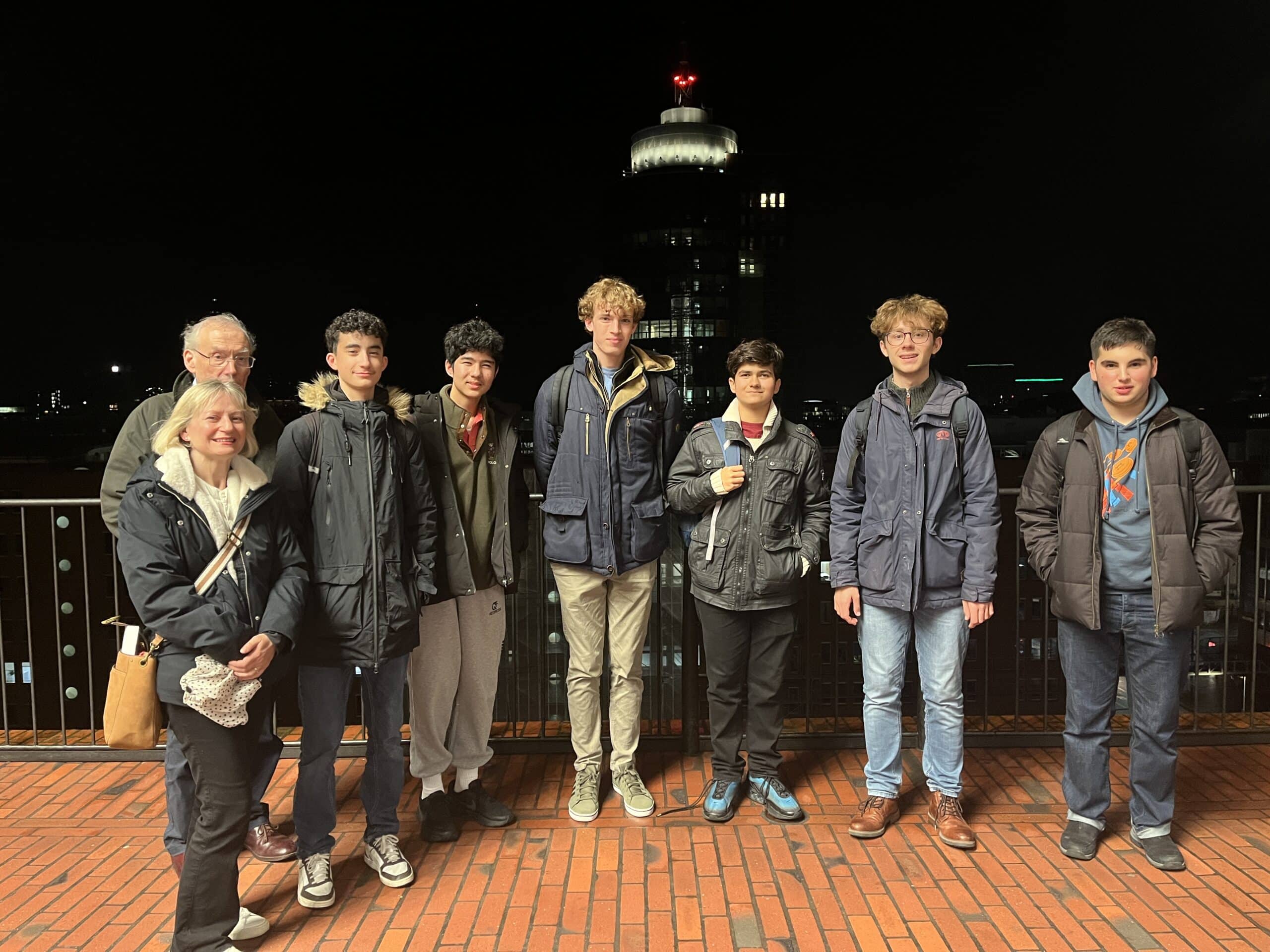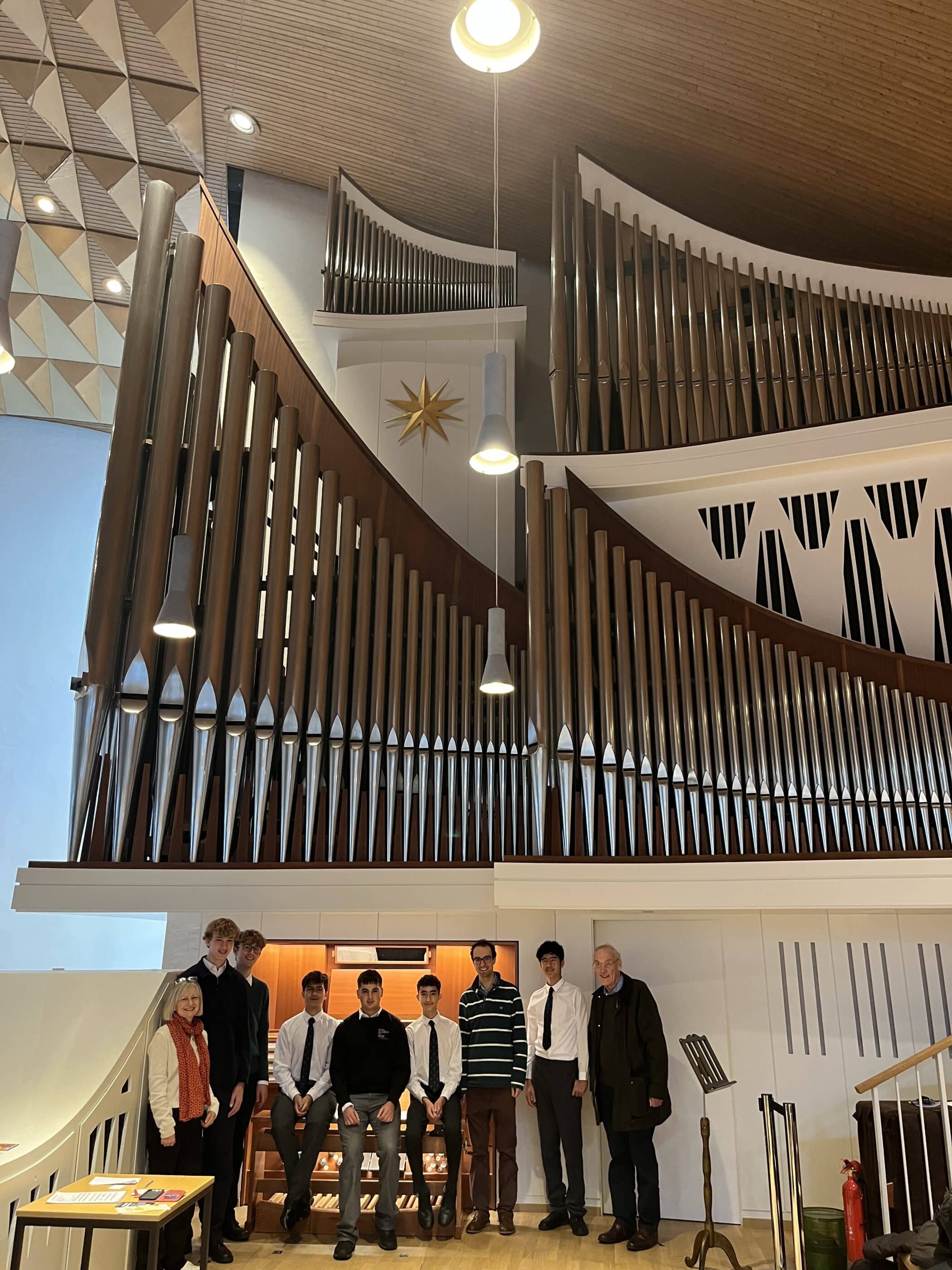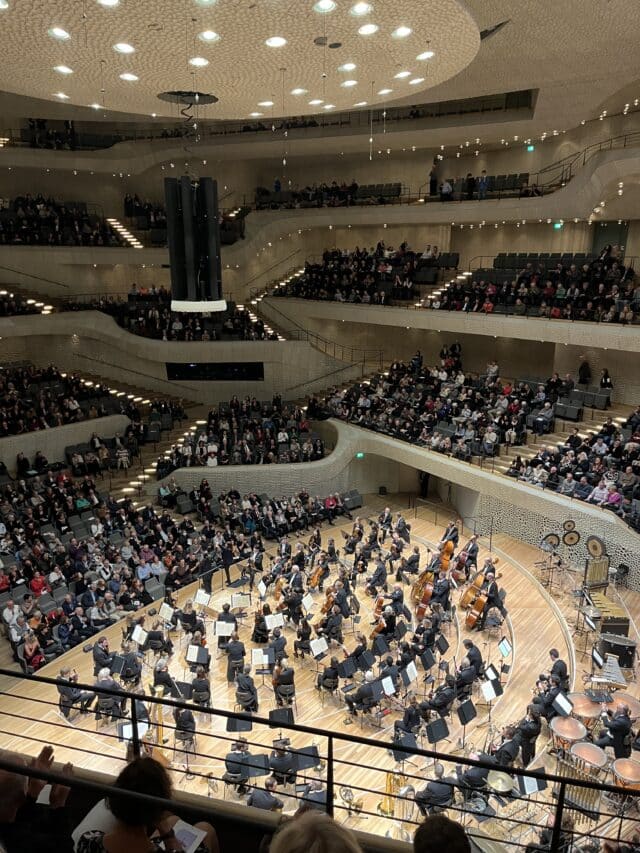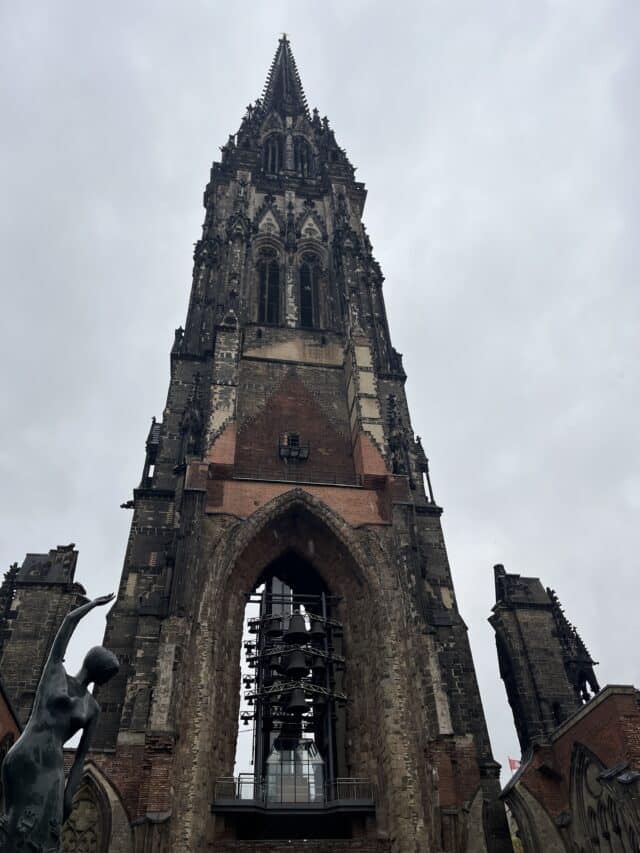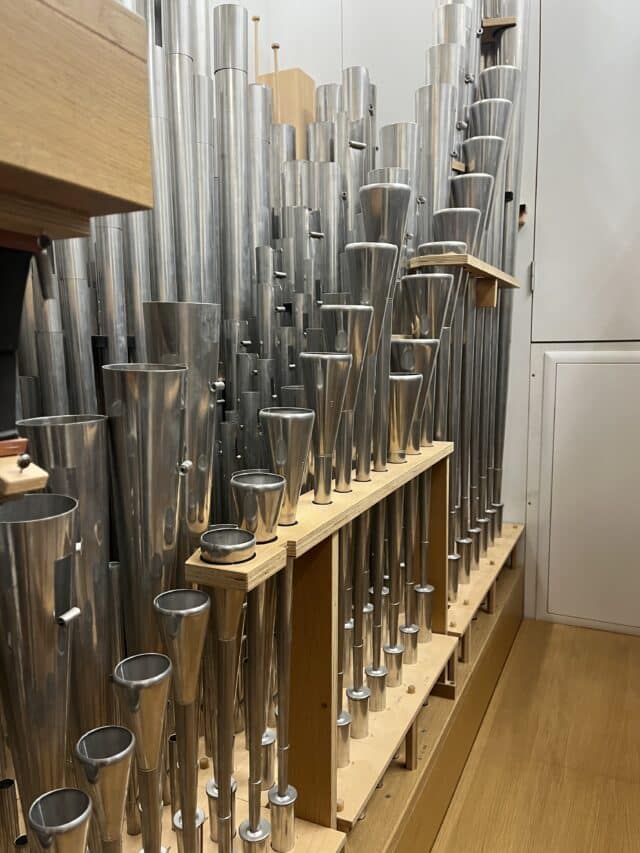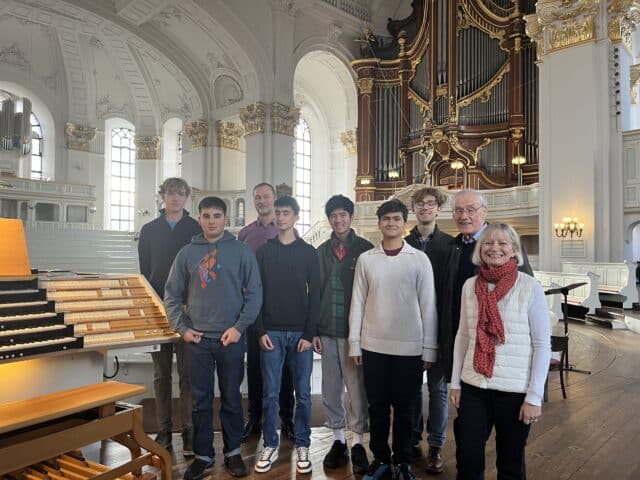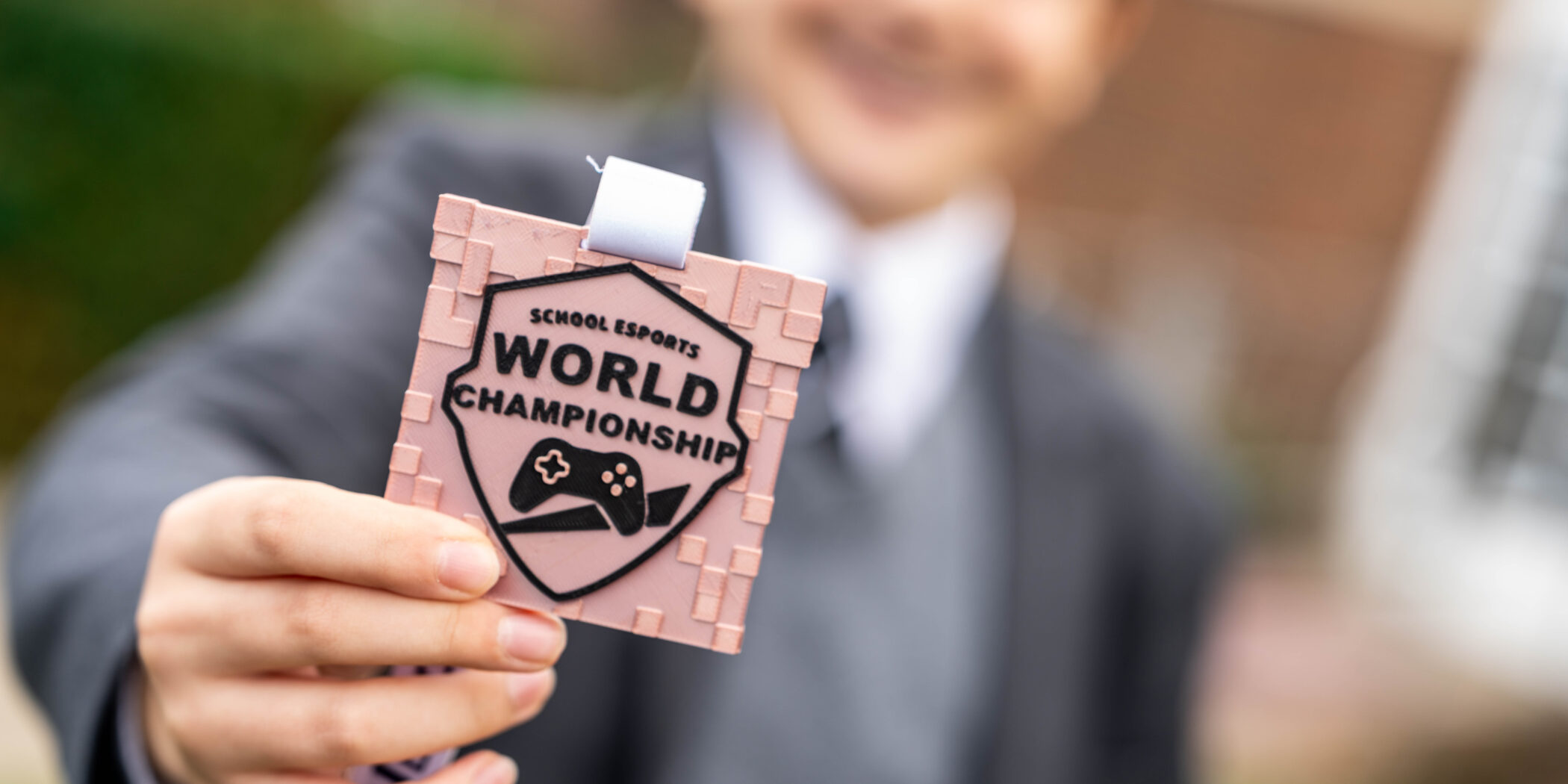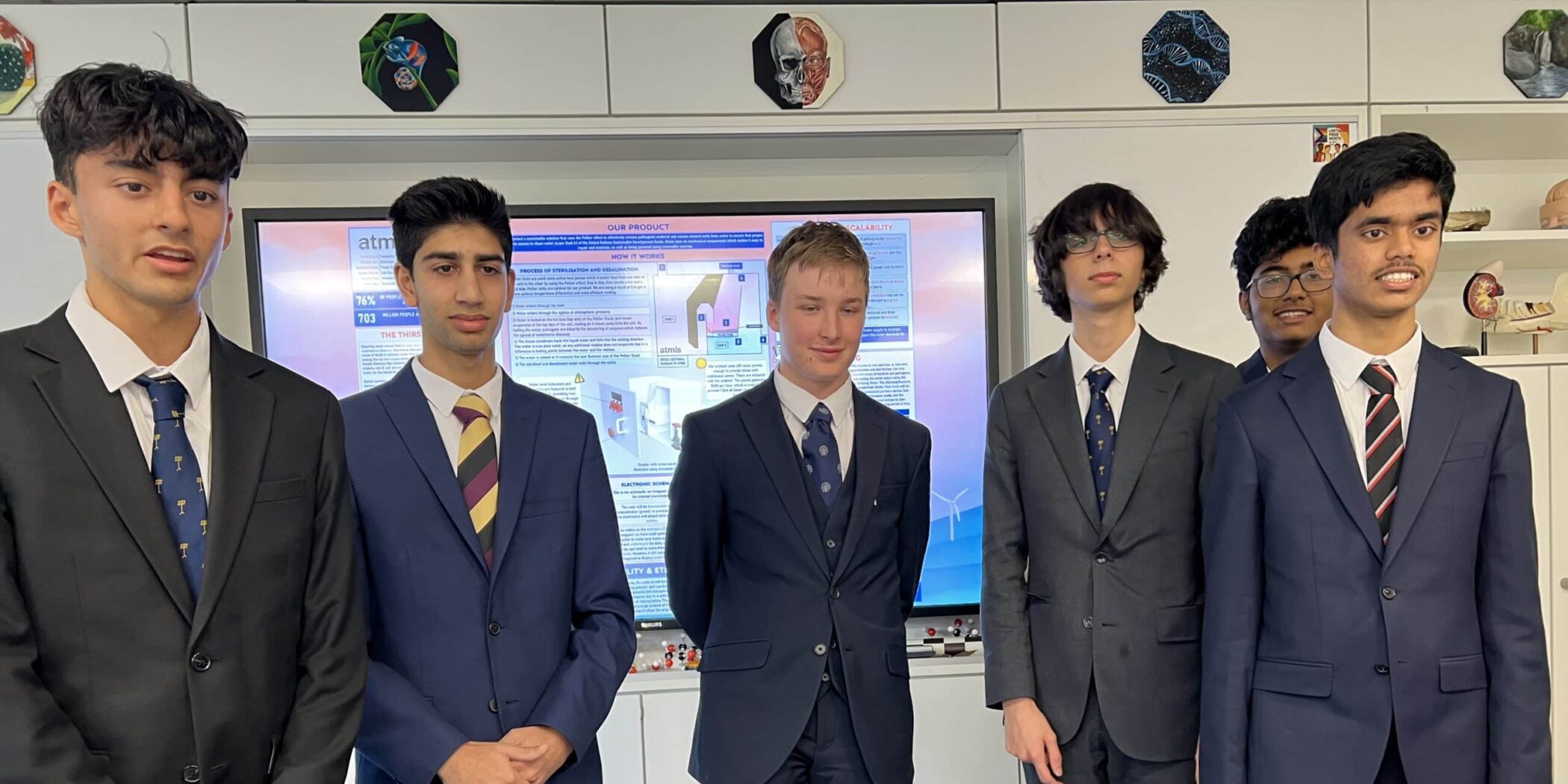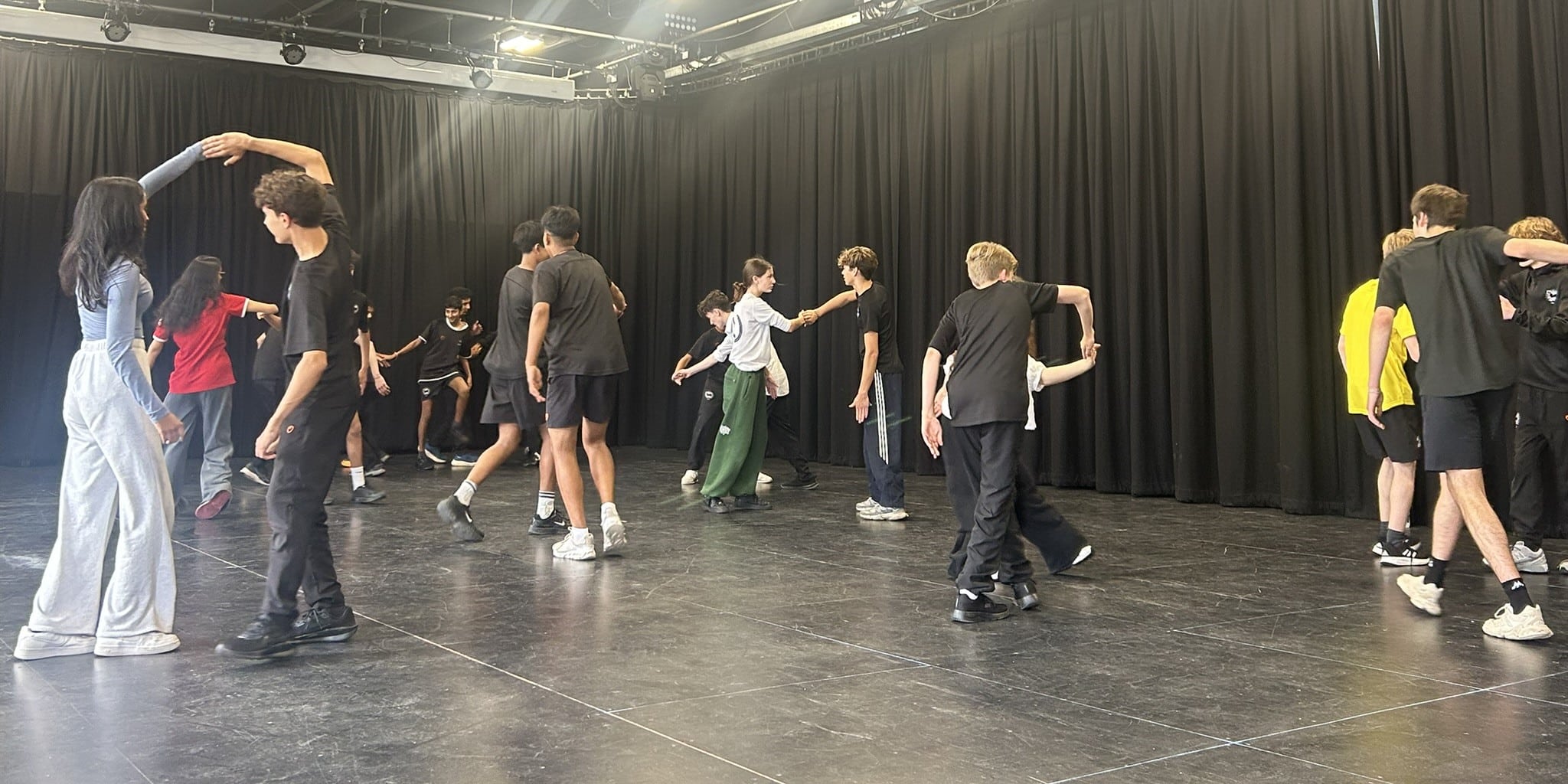Writes Samuel Hill, Music Administrator
Following the excitement of last year’s expedition to the Netherlands, six of the school’s pupil organists, together with Mr Hill, Mrs Stubbs, and Mr Hobson, embarked on another overseas extravaganza, this time based in the Hanseatic city of Hamburg, often referred to as the ‘most English of German cities’.
On Saturday 25th October, the first day of the trip, we gathered at Heathrow at 6.30am, and with some of us barely awake, we undertook the requisite operations, and remarkably flew out of the metropolis on time. Arriving in Hamburg in the late morning, we first headed for our hostel, located adjacent to the Hauptbahnhof.
Thus began our interaction with the Hamburg U-Bahn and S-Bahn system, which reliably served us for our stay. After depositing our luggage, we felt that lunch was in order, and travelled to a Breton establishment to enjoy galettes and crêpes – not a very German way to start the trip, but tasty nonetheless.
Ahead of our attendance at a service at St Nikolai am Klosterstern on Sunday, we visited the ruin of the old St Nikolai, built in the mid-nineteenth century to the design of Sir George Gilbert Scott. The weather was not wholly hospitable, and we soon returned to our hostel where, after settling in, Mr Hobson gave us all an enlightening introduction to the organs of Hamburg and Lübeck, which took us close to our next appointment; supper. For this we travelled by U-Bahn westwards through the city, to a small side street adjacent to a canal. With no menus in English, and no German between us to speak of, we slowly chose our food as the restaurant filled up.
Expecting rather better weather, a boat trip was booked for the evening so that we might be able to see the sights of the city. Rain and darkness, however, prevailed, and we did not see much. Catching the boat was not quite as easy as it should have been, our place of departure being rather inconveniently located furthest away. As we arrived the boat drew away, but fortunately another materialised. The prospect of learning about Hamburg’s rich trading history was immediately dispelled when it became apparent that the whole of the commentary (for an hour and a half) was in German. It was, despite this, a pleasant trip.

It was fortuitous that having lost an hour travelling into Europe, we regained it by virtue of the clocks going back an hour on our first night. On our first full day in Germany, we began the day with a morning service at Hauptkirche of St Nikolai, which was newly built in the affluent Klosterstern district in the 1960s. We arrived in good time to enable Dominic D. (U6ths) to have an opportunity to practice the organ ahead of playing the voluntary at the close of the service. The liturgy itself was surprisingly familiar, and though we flitted between two hymn books and an order of service, it was not too difficult to follow, and some of the tunes were known to us.
We were welcomed in English, though the whole of the service was in German. After playing the voluntary, we all ascended to the capacious south gallery, which houses the recently re-built ‘hyperorgan’, an extraordinary instrument suitable not only for conventional organ music, but thanks to its percussion stops, variable wind pressure, and electro-acoustic possibilities, capable of almost unearthly sounds. We were fortunate that the church’s organist, Anne Michael, was able to speak so knowledgably and to demonstrate so ably the capabilities of the instrument. The lunch which followed was not wholly as expected: we had hoped to sit overlooking the Alster, but the weather wished otherwise, and we opted for noodles.
The afternoon was spent at the Hauptkirche of St Katharinen, a church whose organ the great J. S. Bach played, and of which G. P. Telemann was organist. Sadly, this organ was one of many victims in the Second World War, and the present organ is a reconstruction. We had a few hours to practice, and then at 5 o’clock we gave a recital. The start of proceedings was indicated in a most curious way – by the sounding of the cymbelstern. We were delighted that the audience – which numbered about 25 – included the family members of two of the boys. With the rain now less, we headed to our supper destination, where in addition to eating we were able to enjoy several rounds of the game ‘Psychiatrist’, introduced to the boys on last year’s trip to the Netherlands.
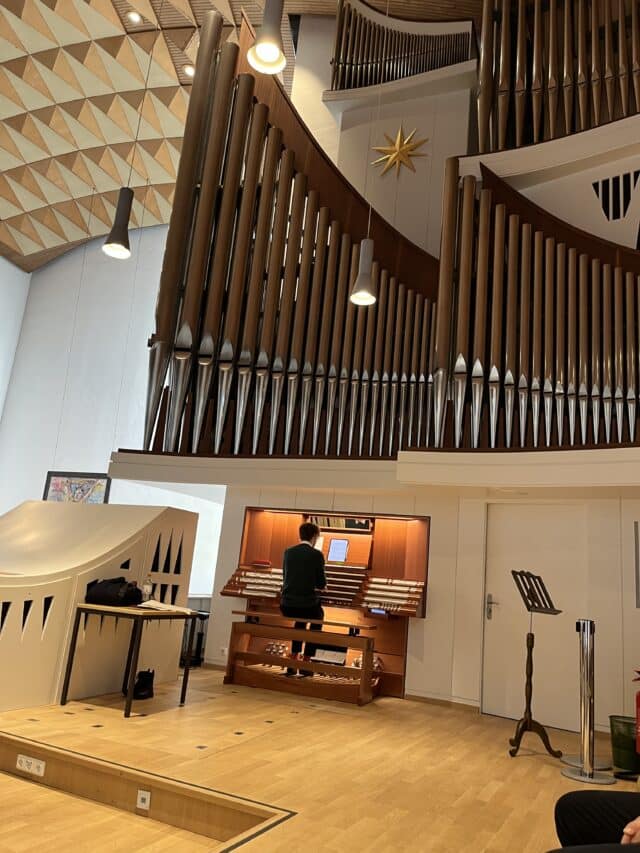
Monday brought the promise of many more organs to play, the first of which was at the RC church of St Elisabeth, not far from St Nikolai. Here we met the Head Voicer of Rudolf von Beckerath, organ builders of Hamburg who have created in the church an organ with two consoles back to back, the one with stops from the original organ they built in the middle of the last century, and the other console having in addition to these all the new stops which they have recently added. Wishing to make use of this rare set-up, we found a curious duet for two organs on the internet, of which we played less than half before concluding the composer was unknown for a reason.
Leaving the church a little earlier than scheduled, we were able to attend the short midday service at the Hauptkirche of St Michaelis, which included organ music, scripture readings, and short reflections. After the service, we were met by the organist, Jörg Endebrock, who gave us a tour of the church’s four organs: the main organ, the echo organ, the choir organ, and the C. P. E. Bach organ, the last named after the composer who was baptised in the church. Three of the organs are played from the same detached console located in the choir gallery on the north side of the church.
Our lunch was one of many had at an Italian restaurant, after which we travelled to the eastern side of the city to visit the Hamburg Bunker Museum, one of many such structures built during the Second World War to protect civilians against bombing raids by the RAF. Comprising three tunnels, the bunker would have sometimes held hundreds of locals whose houses did not have cellars. Amongst the exhibits were, curiously, photos of bombed-out streets in Holborn and other areas of London. A staggering 96% of buildings in the area in which the bunker is located were flattened in the war, and the municipality is working to gather an archive to better understand the history of the neighbourhood. Upon our return to the city centre, we had some time to spare.
Top of the agenda was sourcing a hat for Kian C. (L6ths), which with Mrs Stubbs’ expert guidance was duly found. We then decided to escape the increasingly miserable weather by enjoying some tea. It was at this point that Mr Hobson brought to our attention the fact that the concert we were to hear that evening was not to be quite as it seemed: two movements of Tchaikovsky’s Fourth Symphony had been rewritten, and we were to expect the unexpected. Never were truer words spoken. Moving from one eatery to another, we arrived for supper at about 6.30pm. Shortly after 7.30pm we left to attend a concert at the Elbphilharmonie. An incredibly impressive building, it is entered by means of two long escalators followed by a seemingly interminable number of steps. Eventually finding our perch high above the orchestra, we were immediately struck by the immediacy of sound in so vast a space. The concert began with Borodin’s overture to Price Igor, before we heard two contrasting works by Ravel, first Pavane, and then La Valse.
After the interval the Tchaikovsky began as expected, but took rather a dramatic turn in the second and third movements, where a vast array of borborygmic noises were heard from a swelling percussion section. The addition of live electronics hardly settled the restless group, and we were relieved when the fourth movement arrived unbowdlerised. We decided to take the bus back to the hostel, which arrived somewhat late, but we were still able to have a good rest before our day trip to Lübeck.

Tuesday was the only day we spent away from Hamburg, and we caught the train to Lübeck straight after breakfast. Deutsche Bahn was predictably delayed, but we were still able to make our first masterclass in reasonably good time.
We were immediately struck by the colossal scale of the Marienkirche, with its huge pointed arches and wide open nave. Here we met the sub-organist, Nataliya Abryutina, who firstly talked to us about the history of organs in the church. Since Mr Hobson last visited the enormous organ mounted on the west wall of the church had been dismantled, and half of the church was covered with scaffolding. Works were continuing whilst we were there, and the masterclass was accompanied by near-constant drilling, and interrupted by a disgruntled tour guide.
Despite these things, and the fact that the church was rather chilly, the masterclass was very engaging and informative. The ‘Totentanz’ organ which we played, on the north side of the church, is a versatile instrument, and in addition to much Bach, we also had some Vierne and Mendelssohn. Before leaving, we gathered for a photo beside a memorial to Dietrich Buxtehude, erstwhile organist of the church. After a quick lunch of potatoes, we wandered to the north of the city to the Jakobikirche. Somewhat smaller than the Marienkirche, the church has three organs, one on the west gallery and two others on each the north and south galleries.
We began in the north gallery playing an organ which dates back the early sixteenth century, built by Friedrich Stellwagen. It was an unforgettable experience to play music by Buxtehude on this organ, an instrument built about a century before he was born. The main organ at the Jakobikirche is somewhat more recent, and rather versatile, and between us we played works by Stanford, Parry, and Howells in addition to repertoire of the North German organ school. Whilst we had expected to spend nearly four hours at the Jakobikirche, we actually only had two hours there, and as such we had a few hours in which to explore the city further.
Trying to find the Cathedral, we ended up at St Giles, which was not open, and found outside two singers, who had more passion than tunefulness, and were somewhat dismayed when we were not wholly enthusiastic in joining in with their round-singing. We felt that afternoon tea was in order, and to that end we found a rather charming café which purported to be open until not long before our restaurant booking. After cups of tea and hot chocolate though, we were told that they would be closing somewhat earlier than advertised, and we resorted to retail therapy to occupy ourselves for the remaining time. Our attention was turned to the lad who was unable to join us on the trip, and for him we found what turned out to be a well-chosen, if slightly random and not at all related to Germany, capybara hat, which Mr Crawford subsequently named Hieronymus (presumably after the composer Praetorius, born and died in Hamburg). Other more tasteful (and tasty) gifts were found, including Lübeck’s major speciality: marzipan.
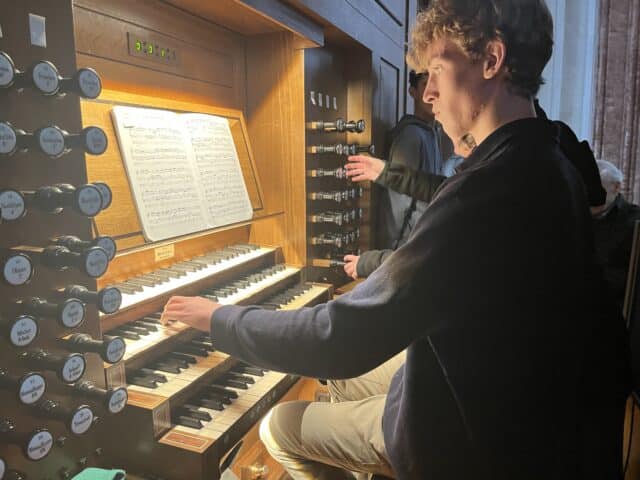
We then came to our evening meal which we ate, at the suggestion of Mr Hobson, who had dined there in the 1980s and 1990s. Incidentally, he chose the same dish as these previous times. The restaurant of choice was the Schiffergesellschaft, a medieval dining hall built for sailors and those in allied trades which has been in operation since 1525. Guests eat at long tables, and the walls are adorned with ancient wall paintings, and the beamed ceiling hung with countless ships. Fortunately, the menu was available in English, and we settled in for rather a splendid meal. Deutsche Bahn, though, had another trick to play, and our return train was delayed by nearly half an hour.
After a late night, an early morning was not wholly appealing, but we were invigorated by a walk to the museum of car prototypes which we visited on our final morning in Germany. Here we saw many examples of early and concept cars, predominantly Porsches, but other marques also. In our short time at the museum several of the boys found time to try the racing simulator, though sadly the staff were not able to. Our final musical engagement was at the Hauptkirche of St Jacobi, a strong contender for the most exciting organ which we played.
The organ mercifully escaped the horrors of the War by being carefully stored in the base of the church tower, and has been reconstructed to a near-original state. Some of the pipes in the organ date back to 1509. In our short masterclass with the organist, Gerhard Löffler, we focussed on the music of Bach, memorably asking us to set words to a fugue subject played by Ben C. (L6ths). Our final lunch in Germany was at an Italian restaurant, and after this we headed to Hamburg Airport, having collected our belongings from the hostel. The return flight was a little late, but we arrived into Heathrow around 7pm, and were home for supper.
We look forward to another organists’ trip at some point, in addition to the several planned recitals which the boys will both give and attend.


